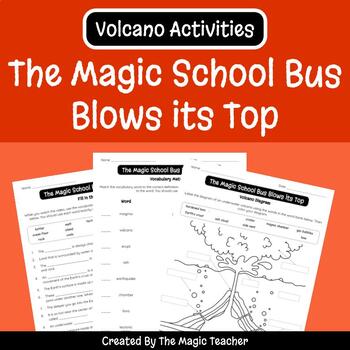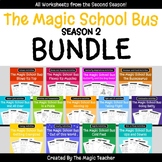The Magic School Bus Blows Its Top - Volcano Worksheets
The Magic Teacher
101 Followers
Grade Levels
3rd - 5th
Subjects
Resource Type
Standards
NGSSMS-ESS1-4
NGSSMS-ESS2-3
NGSS4-ESS1-1
NGSSMS-ESS2-2
NGSS2-ESS1-1
Formats Included
- PDF
Pages
6 pages
The Magic Teacher
101 Followers
Also included in
- This bundle includes ALL of my worksheets from all 13 episodes in season two of The Magic School Bus! There are between 3 and 5 activities for each episode of the show. Check out my Magic School Bus Season 1 Bundle as well!Seasons 3 and 4 are on the way soon!Price $9.00Original Price $13.00Save $4.00
- This is a GROWING BUNDLE of all of my The Magic School Bus worksheets from my store. For every episode, there is a fill-in-the-blanks video guide for students to complete during or after the episode. Each episode also has two to four additional activities for follow-ups and extensions to keep your kPrice $20.00Original Price $25.00Save $5.00
Description
Quick and easy printable activities to be used with The Magic School Bus! This is a perfect resource for a fun science class or ready-to-go sub plans. The packet includes a fill-in-the-blanks video guide for students to complete while they watch the episode, as well as a few extra worksheets for follow-up activities. There is an answer key for each activity.
I hope you and your students enjoy!
Total Pages
6 pages
Answer Key
Included
Teaching Duration
1 hour
Report this resource to TPT
Reported resources will be reviewed by our team. Report this resource to let us know if this resource violates TPT’s content guidelines.
Standards
to see state-specific standards (only available in the US).
NGSSMS-ESS1-4
Construct a scientific explanation based on evidence from rock strata for how the geologic time scale is used to organize Earth’s 4.6-billion-year-old history. Emphasis is on how analyses of rock formations and the fossils they contain are used to establish relative ages of major events in Earth’s history. Examples of Earth’s major events could range from being very recent (such as the last Ice Age or the earliest fossils of homo sapiens) to very old (such as the formation of Earth or the earliest evidence of life). Examples can include the formation of mountain chains and ocean basins, the evolution or extinction of particular living organisms, or significant volcanic eruptions. Assessment does not include recalling the names of specific periods or epochs and events within them.
NGSSMS-ESS2-3
Analyze and interpret data on the distribution of fossils and rocks, continental shapes, and seafloor structures to provide evidence of the past plate motions. Examples of data include similarities of rock and fossil types on different continents, the shapes of the continents (including continental shelves), and the locations of ocean structures (such as ridges, fracture zones, and trenches). Paleomagnetic anomalies in oceanic and continental crust are not assessed.
NGSS4-ESS1-1
Identify evidence from patterns in rock formations and fossils in rock layers to support an explanation for changes in a landscape over time. Examples of evidence from patterns could include rock layers with marine shell fossils above rock layers with plant fossils and no shells, indicating a change from land to water over time; and, a canyon with different rock layers in the walls and a river in the bottom, indicating that over time a river cut through the rock. Assessment does not include specific knowledge of the mechanism of rock formation or memorization of specific rock formations and layers. Assessment is limited to relative time.
NGSSMS-ESS2-2
Construct an explanation based on evidence for how geoscience processes have changed Earth’s surface at varying time and spatial scales. Emphasis is on how processes change Earth’s surface at time and spatial scales that can be large (such as slow plate motions or the uplift of large mountain ranges) or small (such as rapid landslides or microscopic geochemical reactions), and how many geoscience processes (such as earthquakes, volcanoes, and meteor impacts) usually behave gradually but are punctuated by catastrophic events. Examples of geoscience processes include surface weathering and deposition by the movements of water, ice, and wind. Emphasis is on geoscience processes that shape local geographic features, where appropriate.
NGSS2-ESS1-1
Use information from several sources to provide evidence that Earth events can occur quickly or slowly. Examples of events and timescales could include volcanic explosions and earthquakes, which happen quickly and erosion of rocks, which occurs slowly. Assessment does not include quantitative measurements of timescales.







